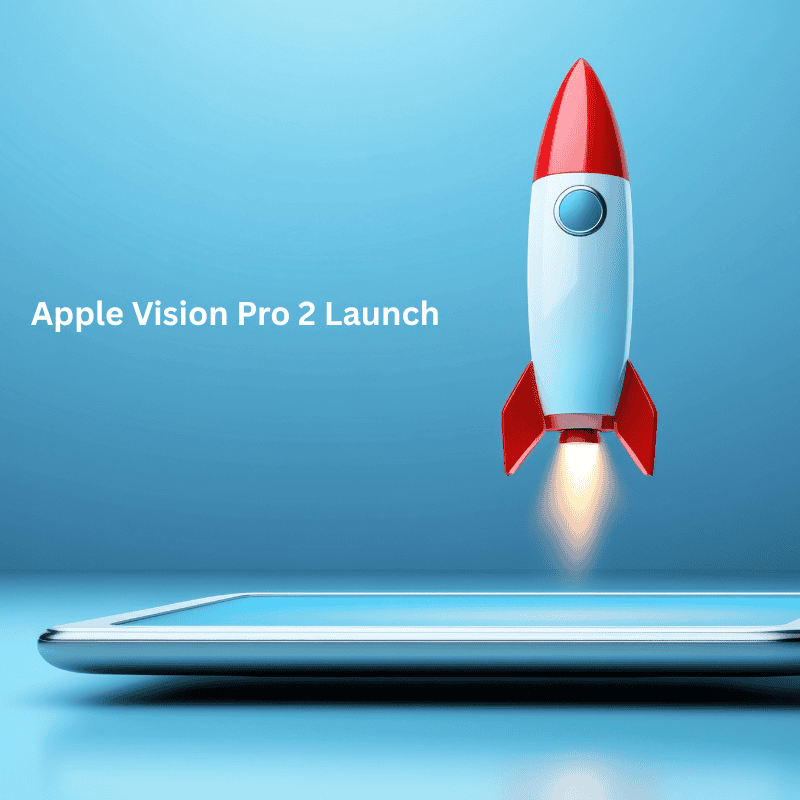When Apple first dropped the Vision Pro back in 2024, it was more of a statement than a gadget — “the future of computing starts here.” Now, in 2025, Apple’s back with its second-generation headset, Vision Pro 2, and this time, it’s not just flexing power — it’s showing purpose.
So what’s new, what’s smarter, and why is everyone in tech talking about it? Let’s dive deep into what makes the Apple Vision Pro 2 a major milestone in the world of mixed reality (MR) and how it’s reshaping industries, entertainment, and daily life.
Sleeker, Lighter, Smarter — Apple Heard the Feedback
One of the biggest complaints about the first Vision Pro was that it felt a bit… heavy on the face and light on comfort. Apple clearly took notes.
The Vision Pro 2 is reportedly 30% lighter, with a redesigned headband that balances weight more evenly. The new micro-OLED panels now push 8K resolution per eye, creating visuals that are more real than reality itself.
Even the eye-tracking sensors have improved. They’re smoother, faster, and integrated with Apple’s A2 chip, built specifically for real-time mixed reality rendering.
And the biggest win? Battery life. The Vision Pro 2 lasts up to 4.5 hours on a single charge — almost double the first-gen device. That’s a huge jump in usability.
Apple Intelligence Joins the Party
This year’s biggest buzzword — Apple Intelligence (the company’s own AI ecosystem) — is fully integrated into Vision Pro 2.
That means your headset now understands your gestures, voice, and even your intentions more naturally.
Imagine saying:
“Show me my last project in 3D”
and instantly, your workspace appears around you like a floating digital office.
Or asking:
“Plan a vacation to Manali”
and watching an interactive, AI-generated map unfold right in front of your eyes — with travel costs, flight timings, and scenic highlights popping up in immersive 3D.
It’s no longer just about seeing digital worlds. It’s about living inside them.
From Entertainment to Enterprise — Everyone Wants a Piece
While the first Vision Pro was seen mostly as a high-end toy for tech enthusiasts, the Vision Pro 2 is aimed at professionals and businesses.
- Architects can now walk clients through 3D models of their designs.
- Medical professionals can visualize surgeries before performing them.
- Educators can create interactive classrooms where students explore concepts like never before.
- Gamers? Oh, they’re in for a treat — Vision Pro 2 introduces a 120Hz refresh rate and a new “Game Immersion Mode” that blurs the line between physical and digital.
It’s basically like having a MacBook, movie theater, and creative studio strapped to your face — but comfortably this time.
Mixed Reality Meets AEO, SEO, and GEO — The New Frontier
You might not expect it, but Vision Pro 2 is also reshaping the digital marketing world.
With immersive content becoming mainstream, businesses are adapting strategies for Search Engine Optimization (SEO), Answer Engine Optimization (AEO), and Geographical SEO (GEO) — all through 3D experiences.
Here’s how:
- SEO is evolving beyond web pages. Marketers are optimizing AR/VR content for visibility in Apple’s ecosystem and other mixed reality search engines.
- AEO now means ensuring that voice commands like “Find the best digital marketing company in Mumbai” can pull up 3D, interactive brand experiences inside MR platforms.
- GEO targeting will become hyper-local — brands can project AR pop-ups or virtual billboards near physical stores to attract users wearing Vision Pro devices.
In short: Vision Pro 2 isn’t just changing how we see — it’s changing how we search.
Privacy and Price — Apple’s Classic Two Challenges
Now, let’s talk about the other side.
Apple’s biggest flex — privacy — is again front and center. The Vision Pro 2 processes most AI and sensory data on-device, minimizing cloud sharing. That’s a major plus for security-conscious users.
But the price tag still hits like a punchline. Starting around $2,999, it’s not something your average college kid is picking up anytime soon.
However, Apple’s history shows that today’s luxury tech often becomes tomorrow’s mainstream essential — so it’s just a matter of time.
How Vision Pro 2 Is Changing Daily Life
Let’s be real — the Vision Pro 2 isn’t just for coders and CEOs.
It’s also for dreamers. For people who want to watch a concert from their couch, attend meetings in digital offices, or paint in mid-air with invisible brushes.
Even social platforms are adapting. Apple’s ShareSpace app (expected later this year) will let users hang out in shared virtual rooms — think FaceTime meets the metaverse, but classy.
In short, Apple’s not just launching hardware — it’s building a whole new digital lifestyle.
The Future of Mixed Reality: What’s Next?
Apple Vision Pro 2 sets a new benchmark — not just for MR devices, but for how humans interact with technology itself.
With AI integration, intuitive design, and real-world utility, it’s paving the way for a world where digital and physical coexist seamlessly.
And as other brands like Meta, Samsung, and Google scramble to catch up, Apple continues to do what it does best — lead quietly, dominate loudly.
Conclusion: The Vision Gets Clearer
The Vision Pro 2 isn’t just a gadget; it’s a glimpse into a future where reality is customizable.
Where you can work, learn, create, and connect in ways that feel almost magical.
Sure, it’s pricey, but history has shown — whenever Apple redefines a product category, everyone else follows.
And in the world of mixed reality, the future’s already on your face.

